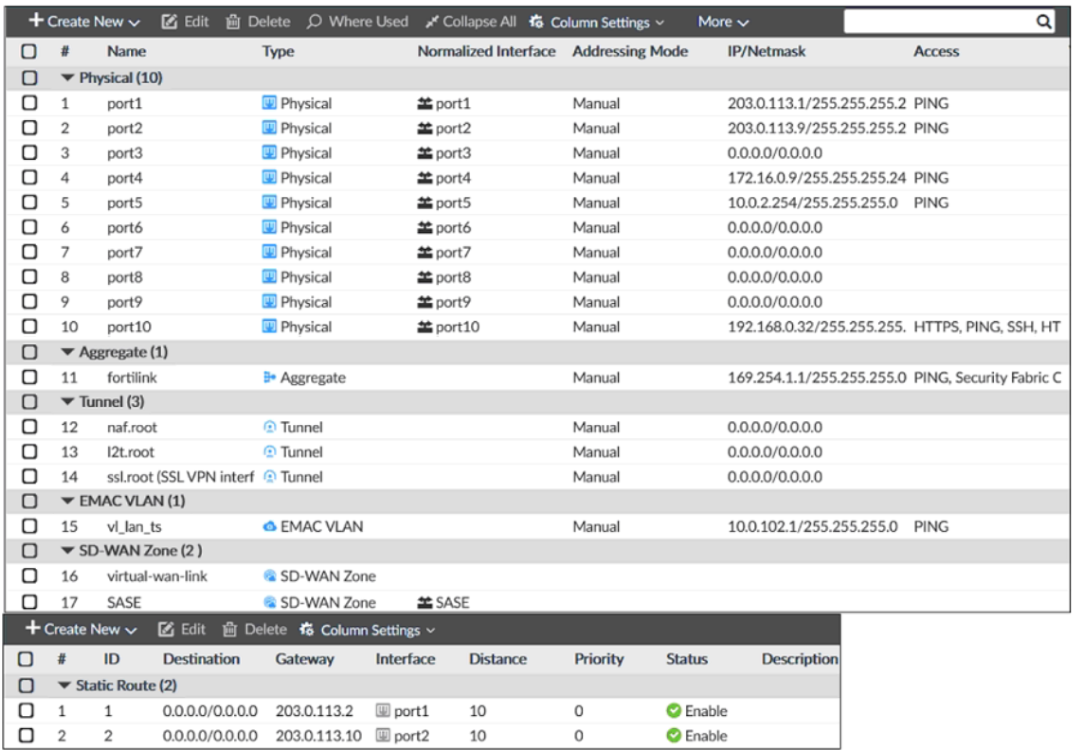Fortinet NSE7_SDW-7.0 Exam Practice Questions (P. 2)
- Full Access (62 questions)
- Six months of Premium Access
- Access to one million comments
- Seamless ChatGPT Integration
- Ability to download PDF files
- Anki Flashcard files for revision
- No Captcha & No AdSense
- Advanced Exam Configuration
Question #6
Which two performance SLA protocols enable you to verify that the server response contains a specific value? (Choose two.)
- AhttpMost Voted
- Bicmp
- Ctwamp
- DdnsMost Voted
Correct Answer:
AD
AD
 GPT-4o - Answer
GPT-4o - Answer
Absolutely spot on choosing A and D! Both HTTP and DNS performance SLA protocols allow us to check if the server's response includes a specific value we're watching for. This capability is super handy when you need to ensure that specific services are up and responding correctly, not just reachable. This sort of specific checkup is not something you can do with ICMP or TWAMP; they're more about general reachability and path performance. So remember, for that detailed response validation, HTTP and DNS are your go-to protocols. Keep this in mind for both practical applications and your exam prep!
send
light_mode
delete
Question #7
Refer to the exhibit.

Which two conclusions for traffic that matches the traffic shaper are true? (Choose two.)

Which two conclusions for traffic that matches the traffic shaper are true? (Choose two.)
- AThe traffic shaper drops packets if the bandwidth is less than 2500 KBps.
- BThe measured bandwidth is less than 100 KBps.Most Voted
- CThe traffic shaper drops packets if the bandwidth exceeds 6250 KBps.Most Voted
- DThe traffic shaper limits the bandwidth of each source IP to a maximum of 6250 KBps.
Correct Answer:
BC
BC
send
light_mode
delete
Question #8
Refer to the exhibit.

Which configuration change is required if the responder FortiGate uses a dynamic routing protocol to exchange routes over IPsec?

Which configuration change is required if the responder FortiGate uses a dynamic routing protocol to exchange routes over IPsec?
- Atype must be set to static.
- Bmode-cfg must be enabled.
- Cexchange-interface-ip must be enabled.
- Dadd-route must be disabled.Most Voted
Correct Answer:
D
D
send
light_mode
delete
Question #9
Which CLI command do you use to perform real-time troubleshooting for ADVPN negotiation?
- Aget router info routing-table all
- Bdiagnose debug application ikeMost Voted
- Cdiagnose vpn tunnel list
- Dget ipsec tunnel list
Correct Answer:
B
B
 GPT-4o - Answer
GPT-4o - Answer
Absolutely, "diagnose debug application ike" is the right choice for digging into ADVPN negotiation issues. This command is super useful because it allows you to enable detailed debugging for Internet Key Exchange (IKE), which manages the actual VPN connections. Setting the appropriate filters after the command really hones in on the specific negotiation details you're trying to troubleshoot. Whether it's a point-to-point or a more complex configuration, this command is your go-to for real-time insights. It’s always wise to refer to the latest study guides or documentation when dealing with different versions or configurations.
send
light_mode
delete
Question #10
Refer to the exhibits.
Exhibit A -

Exhibit B -

Exhibit A shows the system interface with the static routes and exhibit B shows the firewall policies on the managed FortiGate.
Based on the FortiGate configuration shown in the exhibits, what issue might you encounter when creating an SD-WAN zone for port1 and port2?
Exhibit A -

Exhibit B -

Exhibit A shows the system interface with the static routes and exhibit B shows the firewall policies on the managed FortiGate.
Based on the FortiGate configuration shown in the exhibits, what issue might you encounter when creating an SD-WAN zone for port1 and port2?
- Aport1 is assigned a manual IP address.
- Bport1 is referenced in a firewall policy.Most Voted
- Cport2 is referenced in a static route.
- Dport1 and port2 are not administratively down.
Correct Answer:
B
B
send
light_mode
delete
All Pages
